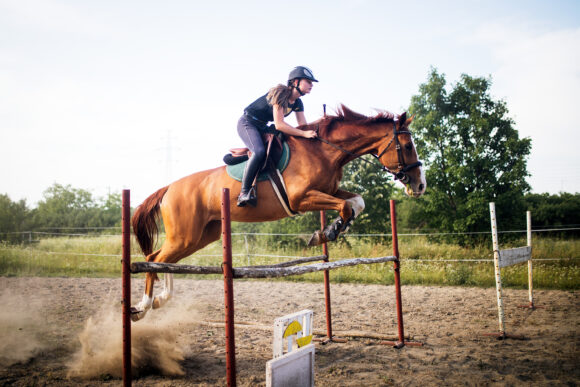The risk of an injury is higher for horse riding than for other potentially risky sporting activities, such as football, motor racing or skiing.
That’s according to research published in the online journal Trauma Surgery & Acute Care Open that found the hospital admission risk from horseback riding is higher than football, auto and motorcycle racing, and skiing.
While the chest is the most common site of a horse riding injury, head and neck injuries are the most lethal, the findings show.
Data from the U.S. Centers for Disease Control and Prevention show that more than 30 million people participate in equestrian leisure and sporting activities every year in the U.S. But relatively little is known about the prevalence and consequences of injuries sustained while horse riding.
To plug this knowledge gap, the researchers drew on data supplied from level I and II trauma centers to the U.S. National Trauma Data Bank (NTDB), on injuries sustained by adults while horse riding between 2007 and 2016.
Details of 45,671 patients with equestrian injuries were retrieved from the NTDB for this period. But data were incomplete for 20,880, leaving 24,791 for inclusion in the analysis. The average age of those injured was 47, with almost equal proportions of men and women.
The most common site of injuries recorded was the chest: 9189 (37%). Injuries to the arms and legs occurred in 6560 (26.5%), while 5689 (23%) sustained head injuries. Abdominal injuries were the least common: 3353 (13.5%).
Severe neurological damage, classified as a Glasgow Coma Scale (GCS) score of 3–8, was observed in 888 (3.5%) patients. The GCS is a clinical scale used to reliably measure a person’s level of consciousness after a brain injury. It ranges from 3 to 15.
Within this group, head and neck injuries were the most likely cause, occurring in 706 patients. Moderate impairment (score 9–12) occurred in only 258 (1%).
Some 21,917 (88.5%) patients had a GCS between 13 and 15. But 4508 (20.5%) of these patients nevertheless had a head and neck injury. While injuries were mainly categorized as mild (33%) to moderate (43.5%) in severity, most (88%) of these patients required admission to hospital, with more than a quarter (28%) sent to intensive care. Around 1 in 10 required surgery.
Average length of stay in hospital was 4.5 days, with an average of 4 days spent in intensive care and 6 days on a ventilator.
Some 320 people died of their injuries during the study period, with head and neck injuries the leading cause of death in three out of four (237;75%). Just 7 (2%) of those who died had sustained Injuries to their arms or legs.
Riders with head and neck injuries were 44 times as likely to die as those with arm/leg injuries, while those with chest and abdominal injuries were around 6 times as likely to do so.
This study included only those patients treated at U.S. trauma centers reporting data to the NTDB.
“When taken together, these data suggest that the dangers of equestrian activities have been severely under-appreciated,” the researchers write. “When controlled for hours of activity, horseback riding resulted in a higher proportion of hospital admission than other higher risk activities like skiing.”
Protective gear such as helmets can save lives, but the equipment is not always worn, they highlight.
“Interestingly, hospital admission risk from horseback riding is higher than football, auto and motorcycle racing, and skiing,” they continue. “Recently, some attention has been paid by equestrian sporting agencies to the use of protective equipment to prevent injuries, especially as it relates to concussion and brain injuries; however, very few public health campaigns have focused on preventing injuries in riders using horses for leisure and work.”
Topics Auto
Was this article valuable?
Here are more articles you may enjoy.



 Florida Lawmakers Ready for Another Shot at Litigation Funding Limits
Florida Lawmakers Ready for Another Shot at Litigation Funding Limits  Consumer Acceptance of Telematics Widens, Says Survey
Consumer Acceptance of Telematics Widens, Says Survey  Door of Swiss Bar Where 40 Died in Fire Was Locked, Says RTS
Door of Swiss Bar Where 40 Died in Fire Was Locked, Says RTS  Court Orders Justice Family Coal Companies to Pay $1M to Liberty Mutual Unit
Court Orders Justice Family Coal Companies to Pay $1M to Liberty Mutual Unit 

